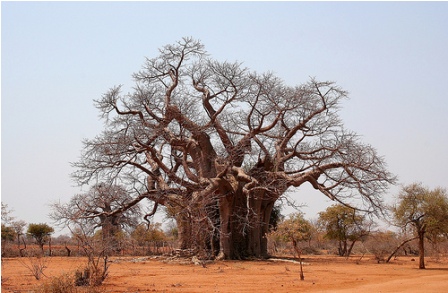 Submitted by Mojo on
Submitted by Mojo on

The shamanism of southwestern Nigeria is called "Ifa" which means "wisdom of nature". According to oral literature, the practice of Ifa originated as far back as eight thousand years ago, making it possibly the oldest monotheistic religion in the world.
The world view of Ifa differs from the world view of mainstream Western metaphysics in two ways; Ifa teaches that everything in nature has some form of consciousness called ori, and it teaches that the world is a multi-dimensional reality.
Ifa is balanced on three legs: Orunmila (Creator), Orisa (Nature Spirits), and the Ancestors. The Supreme Being, Orunmila, is without gender and is not an active participant in the affairs of living humans. Orunmila is benevolent and has provided a Universe with all that is needed for humans to be fulfilled and happy. Through the Ifa divination system, diviners invoke Orunmila, the deity of wisdom, prophecy, morality and ethics. Through a rich language of visual metaphors, Ifa priests convey their concept of the cosmos, and the forces that animate it in the design and creation of the times. Ifa divination rites provide an avenue of communication between the spirit world and that of the living.
Most forms of shamanism teach the idea that the visible world is influenced by invisible worlds that co-exist in the same dimensional space as the physical world. The invisible realms are usually called "Spirit Worlds". The word "spirit" means "essential nature" or "essence". From a shamanistic point of view Spirits are fundamental Forces in Nature that help shape the physical reality perceived by the senses in a non-altered state of consciousness.

Ifa teaches that all things in the world have some form of consciousness. The first step in developing the shamanistic skills of an Ifa initiate is to learn how to empathize with the consciousness of non human Forces in Nature. One of the easiest ways to do this is to sit in the presence of an Oroko tree. In Africa the Oroko tree can have a trunk the size of a house. Biologists estimate that as many as a thousand different life forms co-exist within the sphere of influence of one of these trees. That would include everything from tiny microbes living under the earth to birds and mammals living near the top of the trees.
The cumulative effect of this vast network of consciousness involved in the cycle of birth, life, death and rebirth within a confined space can be extremely informative. Merely being in the presence of the tree produces an altered state of consciousness that seems to generate information that transcends the experience of the person involved in the encounter. The tree is a universal symbol of spiritual growth because a tree is capable of giving instruction to those who are willing to watch and listen.
Communication with non human forms of consciousness is generally described by anthropologists as "possession." There are two Yoruba words for this phenomena; "Ini" meaning "I am", and "ogun" meaning "medicine". The student of Ifa who learns to empathize with the consciousness of various Forces of Nature uses their ability as a problem solving tool.
Ifa practitioners do not regard their spirituality as a “religion” in the Western sense. It is rather a way of relating to spiritual energy that helps individuals discover and stay on their path. The Ifa tradition is based on staying in balance with our community and with the world itself, with our ancestors and our personal spiritual energies.

- 3241 reads